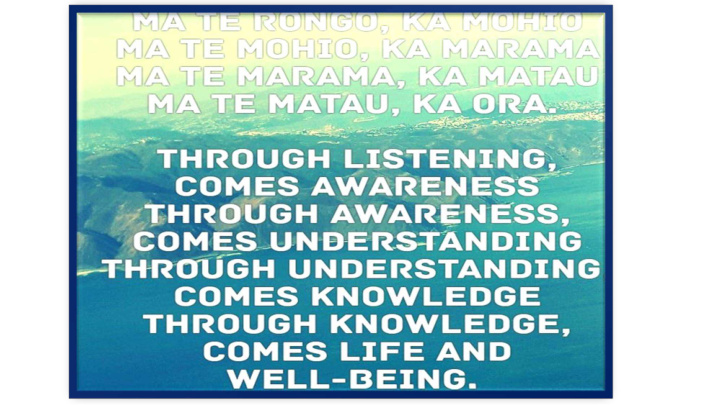



SENSORY MODULATION IN PRACTICE SENSORY Y MODULATI TION IN P N PRACTI TICE CE KERRY WEIR - SMITH
AUTI TISM NEGLECT INTELLE LLECTUAL D L DISABILI LITY TRAUMA LACK OF ATTACHMENT OBJECTS DRU DRUGS FASD
SENSORY PROCESSING - Small cup - Low threshold - Over sensitive - Sensory defensiveness
-large cup - high threshold - under sensitive - sensory seeking
DEFINITION “ the capacity to regulate and organize the degree , intensity and nature of responses to sensory input in a graded and adaptive manner. This allows the individual to achieve and maintain an optimal range of performance and to adapt to challenges in daily life” Miller , Reisman, McIntosh& Simon (2001)
BENEFITS OF SENSORY APPROACHES increased self awareness increased ability to self nurture increased resilience increased self esteem and body image increased ability to engage in therapeutic activities increased ability to engage in meaningful life roles increased ability to cope with triggers
SENSORY APPROACHES ARE: collaborative meaningful trauma – informed recovery focused sensory supportive gender....ability levels....learning needs......symptoms experienced....cultural....spiritual
Therapeutic use of self Standardized Environment assessment modifications tools Sensory modulation techniques Self Grounding soothing activities activities Alerting activities
Sensorimotor activities: yoga / exercise group creating a personalized sensory kit taking a hot shower / bath arts / crafts mindfulness using a sensory cue journaling
Sensory modalities: weighted items music / sound therapy brushing techniques bean bag tapping aromatherapy light therapy pet therapy
SENSORY DIET Daily schedule integrating the following: prevention strategies crisis intervention strategies personalized sensory kit sensory supportive spaces
PHYSICAL ENVIRONMENT MODIFICATIONS sensory room / sensory cart use inpatient / outpatient unit modifications classroom modifications work space modifications development of safe sensory modulation ‘places’ at home.
OVERCOMING BARRIERS TO IMPLEMENTATION
WHAT PEOPLE SAY...... “To try and use alternatives is far better than popping a pill, because the skills that you learned in there, you could bring out. In my handbag I’ve got hand cream, rescue remedy, and a squidgy ball that I carry around all the time, because it’s something I can do, you know rather than carrying a bottle of Clonazepam... It was far more beneficial learning how to cope with it than to pop a pill.”
“I spent an awful lot of time sitting on that chair with a weighted blanket on me. It definitely got me through quite a number of times where staff would have been chasing me out of the ward ... I really do think it probably minimised that to a great extent, where the meds weren’t really doing it for me... they obviously helped to some extent, but it wasn’t enough. Certainly the combination of taking the edge off with the meds and then offering me that physical stimulation definitely made a huge difference for me .”
“ I think in some respects probably the biggest thing it offers, rather than the immediate pay off of actually using the sensory room, is allowing that insight I suppose...to make that a conscious choice, and to realise that actually you have other alternatives... In high stress situations I’ll go and have a hot bath…or I go and lay on the grass and feel the texture of the grass. That kind of thing, and I think I’ve always had some of those to some degree, but I I wasn’t as conscious of f the s sensory a aspect o of f that… realising j just how how pow powerful i it w was i in tha hat c con ontext.”
“I was quite acute most of the time when I came in; I found that it [sensory modulation] didn’t always take away my need to use PRN medication. I often used to use it in conjunction with it. But it w t would m mak ake e th the e medic dication work b better f r for m r me..... Towards the end though before I got discharged, I I would b be e using i it t rath ther th than an PR PRN.”
“In fact, [self-harm] was one of the main reasons I was here on the unit, and for me, most of the time that’s a way of grounding myself, and the massage chair was actually a great safe alternative. I think that’s why it was offered to me quite as much as it was, because it was reducing the self-harm behaviours quite dramatically... The more I used it, the more I became aware and realised that it was actually an alternative that provided, obviously not the endorphin rush that goes along with the other [self-harm] behaviours, but obviously without any of the disadvantages, you know. It might not have had quite the impact as if I had gone and self-harmed, but I didn’t have to deal with, you know, the ramifications.... there’s plenty of other options for physical sensation that aren’t necessarily hard out pain, you know? ”
Recommend
More recommend